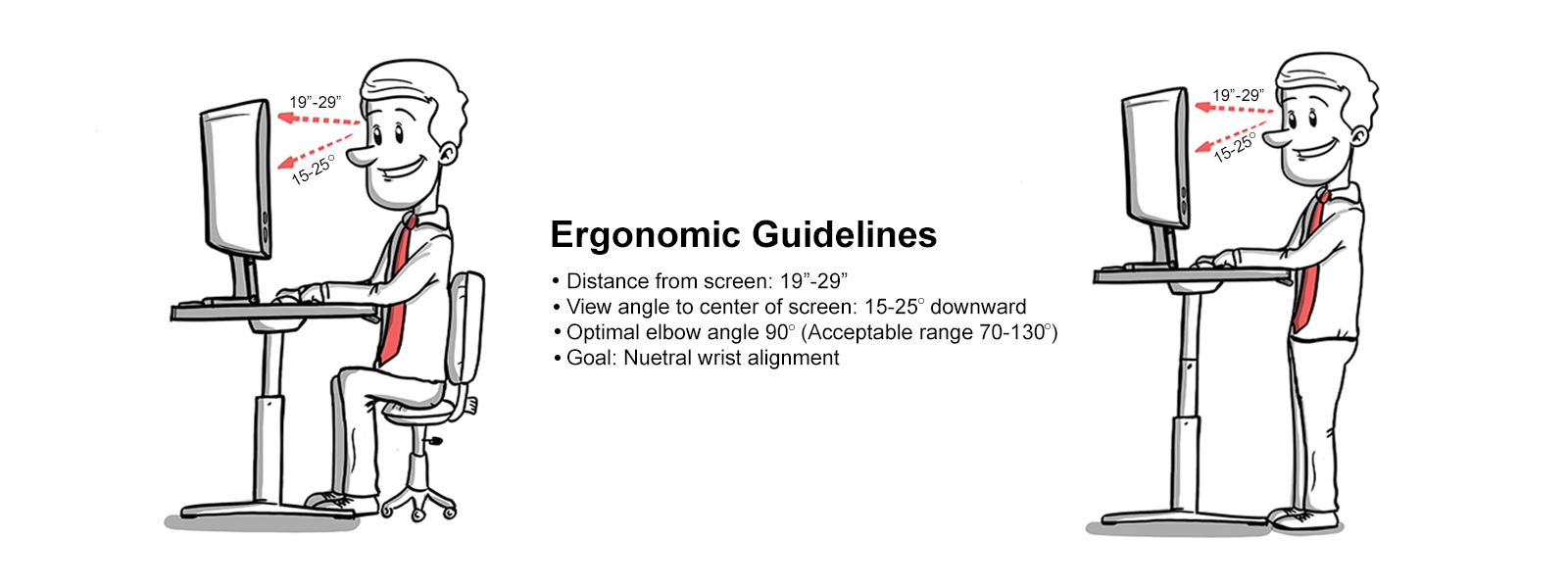
Company Wellness Programs have become more common over the last few years, and for good reason. The benefits are, in short, happier and healthier employees. These programs are proven to increase productivity and retention, reduce sick days, and lower health care costs.
Standing Desks Now a Standard Part of Wellness Programs
Wellness programs range from adding gyms, on-site yoga classes, walking meetings or simply offering a yearly credit towards health-related purchases. Many companies have expanded their list of items or services that qualify for reimbursement: health club membership dues, entry fees for marathons, stress management class costs, group exercise class expenses, and fitness trackers. Additionally, there is a growing trend of companies focusing on the benefits of ergonomic workstations such as adjustable height standing desks, like MojoDesk.

Sit to Stand Desks. Not Just About Standing.
Sit-to-Stand desks are often referred to as “standing desks.” Which is better? Sitting or standing? The right answer is both. The health benefits of an ergonomically correct workstation are detailed in the book called Get Up! Why Your Chair Is Killing You and What You Can Do About It, written by James Levine, professor of medicine at the Mayo Clinic. Frequently changing positions promotes blood flow to large muscle groups and increased metabolism.
Kinesiology and Sit Stand Desks
Corporate Kinesiologist Stevyn Guinnip also reinforces the importance of moving throughout the workday. “It’s no secret that we sit too much as a culture. As a result, people are looking for standing desk solutions to combat the negative effects that sitting has on the body,” said Guinnip.
The key to workplace wellness is to alternate between sitting and standing. This is known as postural rotation. Traditional task chairs with lumbar support and armrests hinder your ability to be strong and injury free because the core muscles that stack and protect the spine begin to get smaller and weaker. That’s why, as a Kinesiologist, I recommend a two-part solution by adding an adjustable desk like MojoDesk and an active, ergonomic chair, such as the Varier MOVE, to your workstation.”
This is backed up by James A Levine, MD, who has a book breaking down the importance of shifting positions called Why Your Chair is Killing You and What You Can Do About It.
Three main factors in active seating:
- Open hip angle
- Stacked spine using your own muscles
- Ability to move, change position, or fidget. Adding an active, ergonomic chair such as MOVE
The video below by Stevyn Guinnip discusses ergonomics and the importance of both standing and sitting at work.
Wellness programs are often managed by health insurance companies. An example is BlueCross Blue Shield of Tennessee that "assists employers in implementing or structuring customized programs to encourage and reward healthy choices and behavior" (Press release).They customize programs, such as wellness credits, with the incentive of premium reductions.
Put the Donuts in the Trash
Other ways of improving health are changing from boxes of donuts in the breakroom and bottomless candy dishes to fruit platters and a smoothie bar. Stressful days can lead to grabbing a bag of fast food or turning to other unhealthy choices. Combine that with sitting for 8-10 hours at a traditional desk and this can lead to weight gain and sluggishness.
Exercising is Not Enough
An ergonomically correct sit-to-stand desk keeps employees comfortable throughout their workday. Exercising is not enough if they go right back to sitting.
Steps to successful Workplace Wellness
In summary, there are many factors companies must take to improve employee wellness and for their programs to be successful. A successful wellness program will result in benefits for both the employee and the company. And these programs don’t need to be a massive investment for a company.
Step 1
The first step is a biometric screening so employees can know their health numbers. This includes monitoring improvement in body mass index (BMI), blood pressure, and cholesterol.
Step 2
The second step is accountability and monitoring progress. Examples of increasing engagement and motivation in the program are monthly newsletters and building a community of collaboration with a Facebook group.
Conclusion
Any effort a company takes towards workplace health will result in companies lowering their healthcare costs, higher productivity, and happier employees.
BUY NOW



